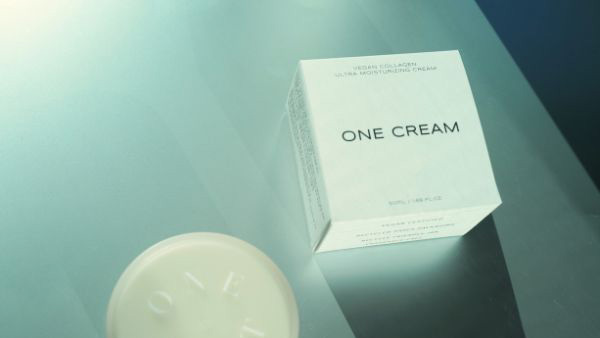DASH stands for Dietary Approach to Stop Hypertension, which is a diet that has been scientifically proven to be effective to treat and/or prevent hypertension. The DASH eating pattern has been shown to prove optimal management for elevated blood pressure, and should be regarded as a cornerstone of therapy. The DASH diet has also been shown to significantly protect against cardiovascular disease, stroke and heart failure, as it significantly lowers your blood pressure. (Tyson, Nwankwo, Lin, & Svetkey, 2012)
Because the DASH diet is a healthy way of eating, it offers health benefits besides just lowering blood pressure. The DASH diet is also in line with dietary recommendations to prevent osteoporosis, cancer, heart disease, stroke and diabetes. (Tyson, Nwankwo, Lin, & Svetkey, 2012)
DASH diet: What to eat?
| Food Group | Example of One Serving | Tips |
| Whole Grains (6 – 8 servings/day) | 1 slice bread1 oz dry cereal½ cup cooked rice, pasta or cereal | Use brown rice instead of white rice, whole-wheat pasta instead of regular pasta and whole-grain bread instead of white bread.Look for products labeled “100 percent whole grain” or “100 percent whole wheat.”Grains are naturally low in fat. Avoid adding butter, cream and cheese sauces. |
| Vegetable(4-5 servings/day) | 1 cup leafy raw vegetables1/2 cup cooked vegetables | Don’t think of vegetables only as side dishes — think of creative recipes that can be served as a main dish in your meals! Look for low sodium or without added salt when buying frozen or canned vegetables. Rinse them with water before consumption if salt is added. |
| Fruit(4-5 servings/day) | 6 oz fruit juice1 medium fruit¼ dried fruit½ cup fresh, frozen, canned fruit | Leave on edible peels whenever possible. The peels of most fruits contain healthy nutrients and fiber.If you choose canned fruit or juice, make sure no sugar is added. |
| Low Fat Dairy(2-3 servings/day) | 1 cup milk1 cup yogurt | Avoid regular and even fat-free cheeses as they are typically high in salt. Have low-fat milk and yogurt product, and add fruits in it for a healthy twist. |
| Lean meat(2 servings/day) | 3 oz of meat, poultry, fish 3 oz ~ size of a pack of playing card | Trim away skin and fat from poultry and meat. Bake, broil, grill or roast instead of frying in fat.Eat heart-healthy fish, such as salmon, herring and tuna. They are high in omega-3 fatty acids, which can help lower your total cholesterol. |
| Nuts, seeds, legumes(4-5 serving/week) | 1/3 cup nuts2 Tbsp seeds½ cup cooked dry beans | These are intended to be consumed only a few times a week because these foods are high in calories. Try adding them to stir-fries, salads or cereals.Soybean-based products, such as tofu and tempeh, can be a good alternative to meat! |
| Fat and Oil(2-3 servings/day) | 1 tsp soft margarine1 Tbsp low fat mayonnaise2 Tbsp light salad dressing1 tsp vegetable oil | Fat helps your body absorb essential vitamins and helps your body’s immune system. But too much fat increases your risk of heart disease, diabetes and obesity. Avoid trans fat – which are commonly found in processed foods. Read food labels on margarine and salad dressing so that you can choose those that are lowest in saturated fat and free of trans fat. |
| Sweet (5 servings/week) | 1 Tbsp sugar1 Tbsp jam or jelly½ oz jelly beans8 oz lemonade | Artificial sweeteners such as aspartame (NutraSweet, Equal) may help satisfy your sweet tooth while sparing the sugar. |
| Salt/Sodium | It’s also particularly important to cut back on the salt you consume per day. A lot of the food we eat already have salt added in. Buy products that are “low in sodium” or “no salt added”. Avoid using salt shaker when cooking or on the table. |
The DASH diet has been shown to be very effective because it is very easy to follow! It is also not restrictive as you are still allowed a huge variety of foods. Obviously, the amount of servings can be adapted to each individual’s needs. Talk to our dietitian or your doctor/nurse to find out what is your recommended amount!
You are now ready to DASH your way to lowering your blood pressure!
References:
Eat a healthy diet. (2017). Heart and Stroke. Retrieved 15 May 2017, from https://etools.heartandstroke.ca
Tyson, C., Nwankwo, C., Lin, P., & Svetkey, L. (2012). The Dietary Approaches to Stop Hypertension (DASH) Eating Pattern in Special Populations. Current Hypertension Reports, 14(5), 388-396. http://dx.doi.org/10.1007/s11906-012-0296-1


